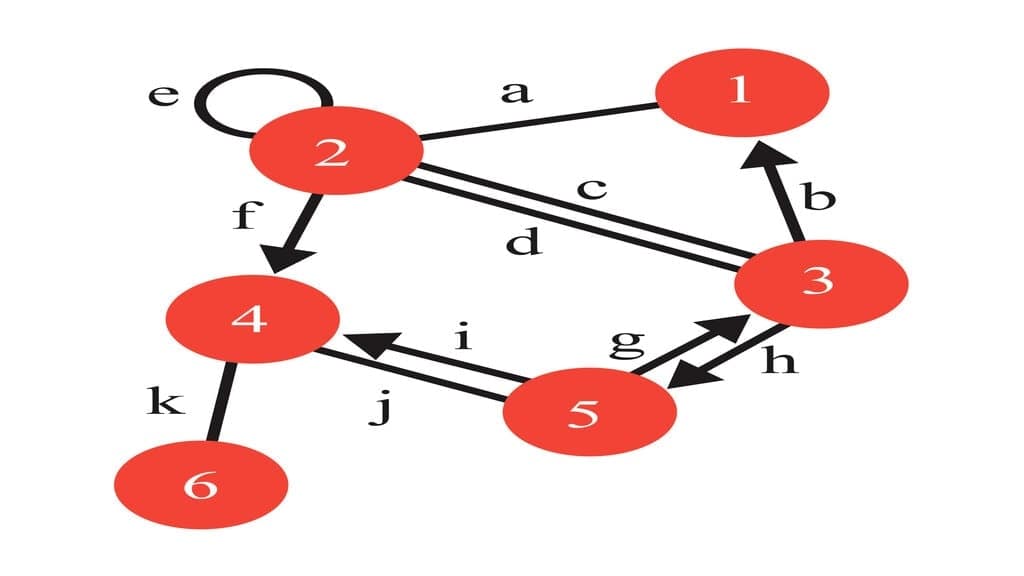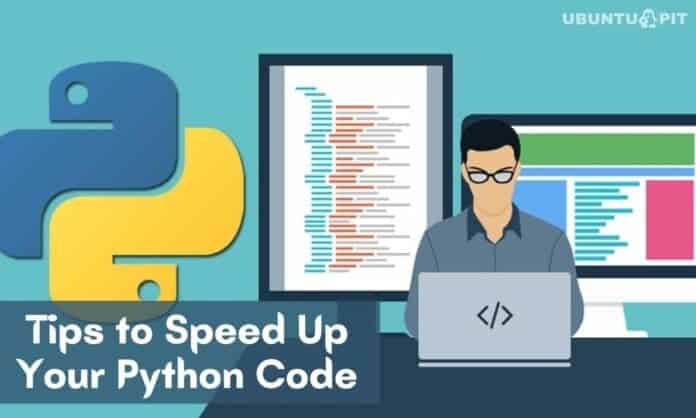If someone asks you – “What is the fastest-growing programming language in the world right now?” the answer will be simple. Its python. The worldwide popularity is due to its simple syntax and rich libraries. Nowadays, you can almost do anything with python: Data science, machine learning, signal processing, data visualization – you name it. However, many people claim that python is a little slow while solving grave problems. But the time to execute a program depends on the code one writes. With some tips and tricks, one can speed up Python code and enhance the program’s performance.
Tips and Tricks to Speed Up Python Code
 In case you are searching for ways to speed up your python code, the article is for you. It illustrates the techniques and strategies to reduce the execution time of a program. Not only will the tips speed up the code, but they will also improve python skills.
In case you are searching for ways to speed up your python code, the article is for you. It illustrates the techniques and strategies to reduce the execution time of a program. Not only will the tips speed up the code, but they will also improve python skills.
01. Use Built-in Libraries and Functions
Python has tons of library functions and modules. They are written by expert developers and have been tested several times. So, these functions are highly efficient and help speed up the code—no need to write the code if the function is already available in the library. We take a simple example in this regard.
#code1 newlist = [] for word in oldlist: newlist.append(word.upper())
#code2 newlist = map(str.upper, oldlist)
Here the second code is faster than the first code because the library function map() has been used. These functions are handy for beginners. Who doesn’t want faster as well as clean and smaller code to write? Therefore, use library functions and modules as much as possible.
02. Right Data Structure in the Right Place
 Using proper data structure will decrease the runtime. Before starting, you have to think about the data structure that will be used in the code. A perfect data structure will speed up the python code while others will mess it up. You have to have an idea about the time complexity of different data structures.
Using proper data structure will decrease the runtime. Before starting, you have to think about the data structure that will be used in the code. A perfect data structure will speed up the python code while others will mess it up. You have to have an idea about the time complexity of different data structures.
Python has built-in data structures such as list, tuple, set, and dictionary. People are habituated to using lists. But there are some cases where tuple or dictionary works much better than lists. To learn more data structures and algorithms, you have to go through the Python learning books.
03. Try to Minimize the Use of for Loop
It’s quite hard to avoid the use of for loop. But whenever you get a chance to prevent it, the experts say you do it. For loop is dynamic in python. Its runtime is more than a while loop. Nested for loop is far more time-consuming. Two nested for loops will take the square of the time in a single for loop.
#code1 for i in big_it: m = re.search(r'\d{2}-\d{2}-\d{4}', i) if m: ...
#code2 date_regex = re.compile(r'\d{2}-\d{2}-\d{4}') for i in big_it: m = date_regex.search(i) if m: ...
It is better to use a suitable replacement in this case. Moreover, if for loops are inevitable, move the calculation outside the loop. It will save a lot of time. We can see it in the example given above. Here the 2nd code is faster than the 1st code since the calculation has been done outside the loop.
04. Avoid Global Variables
 Global variables are used in python in many cases. Global keyword is used to declare it. But these variables’ runtime is more than that of the local variable. Using fewer of them save from unnecessary memory usage. Besides, Python scoops up a local variable more quickly than a global one. When navigating external variables, Python is genuinely sluggish.
Global variables are used in python in many cases. Global keyword is used to declare it. But these variables’ runtime is more than that of the local variable. Using fewer of them save from unnecessary memory usage. Besides, Python scoops up a local variable more quickly than a global one. When navigating external variables, Python is genuinely sluggish.
Several other programming languages oppose the unplanned use of global variables. The counter is due to side effects leading to higher runtime. So, try using a local variable instead of a global one whenever possible. Moreover, you can make a local copy before using it in a loop, saving time.
05. Increase The Use of List Comprehension
List comprehension offers a shorter syntax. It is a handful when a new list is made based on an existing list. Loop is a must in any code. Sometimes the syntax inside the loop becomes large. In that case, one can use list comprehension. We can take the example to understand it more precisely.
#code1 square_numbers = [] for n in range(0,20): if n % 2 == 1: square_numbers.append(n**2)
#code2 square_numbers = [n**2 for n in range(1,20) if n%2 == 1]
Here, the second code takes less time than the first code. The approach to list comprehension is shorter and more precise. It may not make much difference in small codes. But in an extensive development, it can save you some time. So, use list comprehension whenever you have the chance to speed up your Python code.
06. Replace range() with xrange()
 The matter of range() and xrange() comes if you are using python 2. These functions are used to iterate anything in for loop. In the case of range(), it saves all the numbers in the range in memory. But xrange() only saves the range of numbers that need to be displayed.
The matter of range() and xrange() comes if you are using python 2. These functions are used to iterate anything in for loop. In the case of range(), it saves all the numbers in the range in memory. But xrange() only saves the range of numbers that need to be displayed.
The return type of range() is a list, and that of xrange() is an object. Eventually, xrange() takes less memory and, as a result, less time. So, use xrange() instead of range() whenever possible. Of course, this is only applicable to python 2 users.
07. Use Generators
In python, a generator is a function that returns an iterator when the keyword yield is called. Generators are excellent memory optimizer. They return one item at a time instead of returning all at a time. If your list includes a considerable number of data and you need to use one data at a time, use generators.
Generators compute data in pieces. Therefore, the function can return the result when called upon and retain its state. Generators preserve the function state by stopping the code after the caller generates the value, and it continues to run from where it is left off upon request.
Since generators access and compute the on-demand value, a significant portion of data does not need to be saved entirely in memory. It results in considerable memory savings, ultimately speeding up the code.
08. Concatenate Strings with Join
Concatenation is quite common when working with strings. Generally, in python, we concatenate using ‘+’. However, in each step, the “+” operation creates a new string and copies the old material. This process is inefficient and takes much time. We have to use join() to concatenate strings here if we want to speed up our Python code.
#code1 x = "I" + "am" + "a" + "python" + "geek" print(x)
#code2 x = " ".join(["I", "am", "a", "python", "geek"]) print(x)
If we look at the example, the first code prints ”Iamapythongeek” and the second code prints ”I am a python geek”. The join() operation is more efficient and faster than ‘+’. It also keeps the code clean. Who doesn’t want a faster and cleaner code? So, try using join() instead of ‘+’ to concatenate strings.
09. Profile Your Code
 Profiling is a classic way of optimizing the code. There are many modules to measure a program’s statistics. These make us know where the program is spending too much time and what to do to optimize it. So, to ensure optimization, conduct some tests, and enhance the program to improve effectiveness.
Profiling is a classic way of optimizing the code. There are many modules to measure a program’s statistics. These make us know where the program is spending too much time and what to do to optimize it. So, to ensure optimization, conduct some tests, and enhance the program to improve effectiveness.
The timer is one of the profilers. You can use it anywhere in the code and find the runtime of each stage. Then we can improve the program where it takes too long. Moreover, there is a built-in profiler module called LineProfiler. It also gives a descriptive report on the time consumed. There are several profilers which you can learn by reading python books.
10. Keep Yourself Updated – Use the Latest Version of Python
There are thousands of developers who are adding more features to python regularly. The modules and library functions that we are using today will be outdated by the developments tomorrow. Python developers are making the language faster and more reliable day by day. Each new release has increased its performance.
So, we need to update the libraries to their latest version. Python 3.9 is the latest version now. Many libraries of python 2 may not run on python3. Let’s keep that in mind and always use the latest version to get maximum performance.
Finally, Insights
The value of Python developers in the world is increasing day by day. So, what are you waiting for! It’s high time you start learning to speed up the python code. The tips and tricks we provided will surely help you to write efficient codes. If you follow them, we can hope you can improve your code and go into more advanced python stuff.
We have tried to show all the major tricks and tips that are required in speeding up code. We hope the article has answered most of your questions. Now, the rest is upon you. However, there is no end to knowledge and no end to learning. So, if we have missed anything major, let us know. Happy learning!


